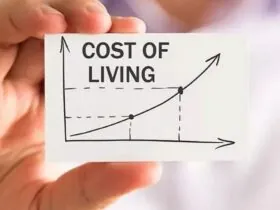In the United States, financial assistance programs are designed to support individuals and families facing economic hardship. Two of the most vital programs—SNAP (Supplemental Nutrition Assistance Program) and TANF (Temporary Assistance for Needy Families)—offer targeted aid to help meet basic needs like food and essential services. Each program has its own set of eligibility requirements and benefits, all aimed at promoting access to resources necessary for a dignified life. Let’s delve into the key features of SNAP and TANF, their eligibility criteria, and how individuals can apply.
SNAP: Food Assistance for Low-Income Households
This Article Includes
SNAP focuses on ensuring that low-income families have access to food through monthly benefits loaded onto an EBT (Electronic Benefit Transfer) card, which works like a debit card for purchasing groceries at authorized stores nationwide. This program is crucial for promoting food security in households that may struggle to afford a nutritious diet.
Who Qualifies for SNAP?
- Income Limit: Each state has specific monthly income thresholds that vary according to household size.
- Residency and Citizenship: Only U.S. citizens or those with legal residency status can apply.
- Documentation Requirements: Applicants must provide proof of income, housing expenses, and other relevant financial documents to verify their economic need.
Benefits of SNAP
SNAP benefits are calculated based on a household’s size and income, with monthly assistance averaging around $292 for a qualifying family. These benefits play a key role in supporting low-income families by ensuring access to nutritious foods that may otherwise be unaffordable.
TANF: Financial Assistance and Support Services for Families with Minor Children
TANF is a temporary program that provides cash assistance to families in financial distress, especially those with minor children. Unlike SNAP, which focuses on food, TANF offers financial help that families can use to cover various essential expenses, including housing, utilities, clothing, and other basic needs. The program also incorporates employment support services, aiming to help families achieve self-sufficiency.
Who Qualifies for TANF?
TANF eligibility requirements vary by state, but the basic criteria include:
- Income and Family Need: Families must demonstrate that their income is insufficient to meet basic living expenses.
- Residency and Citizenship: As with SNAP, TANF is available to U.S. citizens and legal residents.
- Employment Program Participation: In certain states, adult household members must participate in job training or employment programs as a condition for receiving TANF benefits.
Time Limits on TANF Benefits
TANF is a temporary program, and most states enforce a 60-month lifetime limit on receiving benefits. However, this time limit can vary based on specific state regulations and individual circumstances. By offering both financial assistance and job-related support services, TANF plays a critical role in helping families work toward economic independence.
How to Apply for SNAP or TANF
Applications for both SNAP and TANF can be completed through local Human Services or Welfare offices, typically managed at the state level. Many states also offer online platforms to make the process more accessible.
Steps for Applying
- Gather Documentation: Applicants need to provide documents that verify income, residency status, and household expenses.
- Complete the Application: Visit your state’s Human Services or Welfare website to complete an application online or in person.
- Follow Up: After submission, the application is reviewed, and if additional information is needed, the applicant may be asked to provide further documentation.
Applying for SNAP and TANF can make a meaningful difference for families navigating financial hardship by easing access to essential resources and services during challenging times.
The Impact of SNAP and TANF on Poverty Reduction
Both SNAP and TANF are critical in addressing poverty by providing targeted assistance that ensures low-income families can access basic needs. These programs not only help to reduce food insecurity and provide temporary financial relief but also aim to support pathways to employment and economic self-sufficiency.
Each year, SNAP and TANF make significant contributions to lifting millions of Americans out of poverty, improving quality of life, and enabling struggling families to face fewer barriers as they work toward financial stability. Through continued access to these programs, low-income families are better equipped to meet daily needs and plan for a more sustainable future.







Leave a Reply